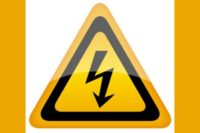Tens of thousands of utility workers are deployed across Florida in an effort to restore power to the approximately ten million people who were left without it after Hurricane Irma battered the state with powerful winds and heavy rain.
The lineworkers, tree-trimmers and others – many of them members of the International Brotherhood of Electrical Workers (IBEW) - are part of what’s being described as the largest power restoration workforce in U.S. history.
Unprecedented outages
“More than half of the population of Florida is out of power would be my guess,” said Florida Power and Light CEO Eric Silagy, who speculated the fallout from Irma could present one of the most challenging restorations the U.S. has ever seen. “We’ve never had that many outages. I don’t think any utility in the country has.” His company alone planned to deploy more than 19,500 linemen and contractors.
Florida officials estimated that 6.5 million customer accounts, nearly two-thirds of the state’s total, were without power on Monday. Because each home or business may have multiple people affected, the total number of people without electricity easily reached more than half the state’s population of 20 million.
It may take weeks
By daybreak Monday, crews that were pre-positioned to respond quickly had sprung into action, assessing damage, beginning the lengthy debris-removal process and prioritizing the most critical repair jobs. Power company officials warned customers before Irma’s arrival that the process would be slow and that some might not see power back for weeks. So far, early post-hurricane surveys seem to confirm that prediction.
More than 100 Pacific Gas and Electric linemen from Vacaville, Calif., Local 1245 flew into West Palm Beach, Fla., on Friday before the storm. It was the first time ever the letter of agreement between FPL and PG&E had been activated, the 2,500 mile trip a stark reminder of Irma’s destructive potential.
The storm could have been worse. Irma was initially predicted to slam into the east coast of Florida near Miami as a Category 5 hurricane, but a glancing blow to Cuba on its path through the Carribean weakened its winds below the 156 mph Category 4 threshold, and a westward shift put the state’s westward side in the crosshairs.
In Jupiter, Fla., where FPL staged thousands of work crews and outside contractors, the damage was less than had been anticipated. Jerry Camacho, a business representative who traveled with Local 1245’s PG&E crews, said his members started work on a substation around 11 a.m. Monday and were working to repair main lines from there. “There’s a lot of debris lying around,” he said, “but no flooding that I’ve seen. It could have been much worse here based on what they were predicting early on.”
Representatives from Tampa Electric Co. said the utility had requested 6,000 work crews for cleanup in its operating area, with crews traveling from as far away as Washington, Delaware, Missouri and even Ontario, Canada.
Source: IBEW





